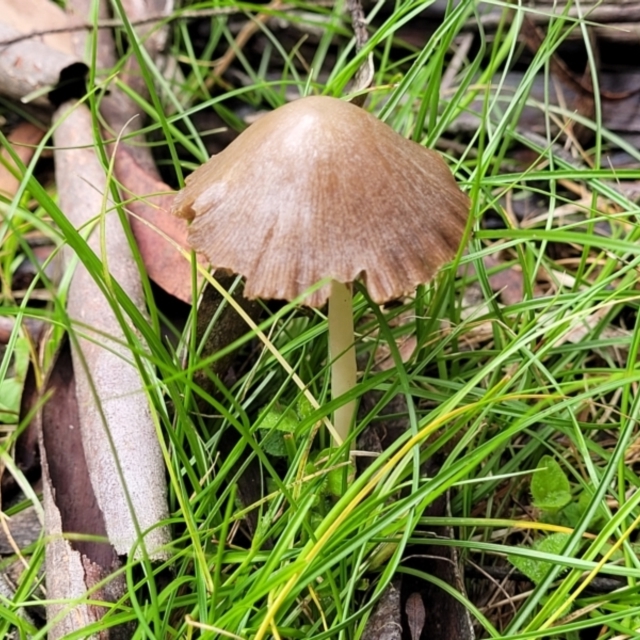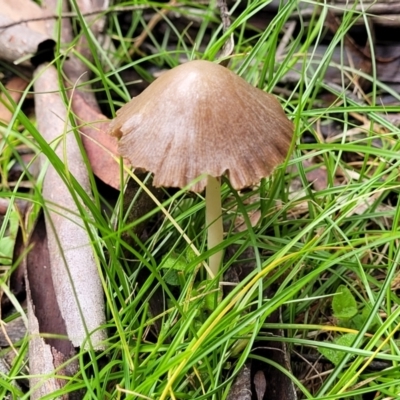Conocybe apala (Milky Cone Cap)
Conocybe apala
Basidiomycota - gilled fungus
Family: Bolbitiaceae
Cap: Lightly coloured to pale tan, conical becoming campanulate (bell-shaped), translucent striate margin almost to the centre (more obvious when wet), smooth, dull, thin flesh.
Gills: Cream-coloured when immature, becoming light tan with maturity, ascending, narrowly adnate (where giils or pores are attached squarely to the stem (stipe))
Stem: Light coloured, cylindrical, smooth, hollow and brittle with a slightly swollen base. Up to 6cm x 0.3cm
Spores: Rust brown in deposit, smooth, elliptical, thick-walled with germ pore.
Habitat: Solitary to gregarious.
Season: Late Summer to autumn
Comments: Cosmopolitan. Widespread. Easily seen on lawns and grassy areas after rain or heavy dew in the early mornings. Decays quickly After the sun comes out. Identified by its light-coloured cap, light tan gills and delicate white stem. Used to be known as Conocybe lactea. Other Conocybe species could be confused but easy to identify to genus.
Reference: Moore, S and O'Sullivan P, 2016, A guide to the common fungi of coastal New South Wales
Conocybe apala is listed in the following regions:
Species information
- Conocybe apala Scientific name
- Milky Cone Cap Common name
- Not Sensitive
- Cosmopolitan
- Non-invasive or negligible
- Up to 1100m Recorded at altitude
- Machine learning
-
Synonyms
Conocybe lactea
Location information
-
Maps
Glenbog State Forest -
Places
Quaama, NSW










